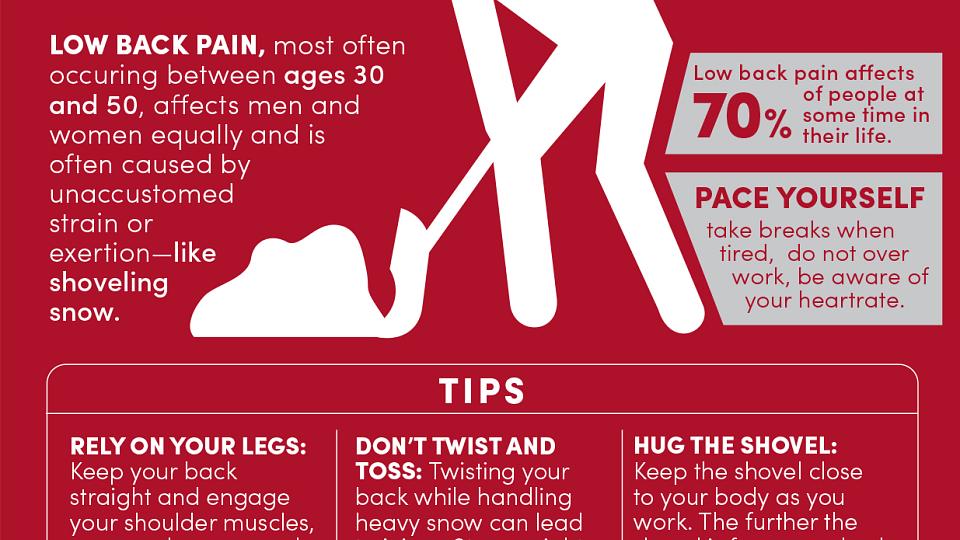
Treating Back & Neck Pain With Physical Therapy
Physical Therapy for Neck Pain & Back Pain
Many people will experience neck pain or back pain at some point in their life—pain that our physical therapists can treat without medication or invasive surgery so you can resume routine activities and reclaim your life. That could mean anything from simply getting out of bed without wincing to jumping back on the ski trail.
Our physical therapists diagnose and treat conditions resulting from injury, disease, and other causes. They see individuals of all ages and use techniques that reduce or eliminate pain to restore healthy movement.
Physical therapy ultimately encourages an active lifestyle based on the proven benefits of frequent exercise, including:
- stronger joints,
- decreased inflammation,
- decreased depression, and
- fewer injury flare-ups for a sustained, higher quality of life.


When to See a Physical Therapist
Contact your physician if:
- Your pain persists or gets worse after several days.
- You experience pain, numbness or tingling in your arms or legs.
- Your pain is accompanied by a headache.
- You are interested in strategies to improve your current symptoms and learn strategies to prevent them from coming back.
Our physical therapy sessions can quickly and effectively treat a broad range of conditions.
How to Prepare for Spine and Sport Physical Therapy
Before your appointment, be ready to talk about how your injury or pain started and what makes it feel better or worse.
While you wait for your appointment, you may consider using heat or ice to manage your pain. However, don’t stop moving altogether. Bed rest for more than a day or two is not helpful. Moderate exercise like walking and stretching can reduce pain and improve your rate of recovery.
Please keep the following in mind:
- Pain is not always a sign that something terrible is happening.
- A very small percentage of people have a serious problem causing their back pain, such as a tumor, fracture or bone infection.
- Surgery is reserved for those who have either failed all “conservative” measures (physical therapy, non-operative care) or when surgery is less risky than any other course of action.
- MRIs that show an “abnormal” image of your spine can actually be quite normal. In other words, you could have an asymptomatic herniated disc that doesn’t offer any pain.
Find a Physical Therapist
Spine & Neck Physical Therapy: What to Expect at Your First Appointment
Physical therapy focuses on helping you become independent and able to manage your symptoms and recover without frequent follow-ups. Patients typically respond to physical therapy within three to four weeks.
For your first appointment, be sure to wear comfortable clothing and be prepared to move around. Your physical therapist will conduct a thorough medical history and exam (like any other provider) to learn your story and understand what might be causing you pain. You will then work together to tailor your treatment plan to meet your needs.
Physical Therapy Treatments for Neck & Back Pain
Your physical therapist will work with you to create an individualized plan that will be safe and effective. There are several treatment plans and options for reducing back and neck pain:
- Progressive strengthening and endurance exercise
- Mobility and stretching
- Modifying your activities to help reduce your pain throughout the day
- Biomechanical assessments of your movement patterns whether it be office or activity-related
- Manual therapy, which uses no devices or machines. This may include hands-on mobilization and massage techniques to reduce your pain, improve movement of soft tissues and joints, and relax your muscles.
- Dry needling, which uses a thin, threadlike, “non-injection” needle to penetrate the skin and stimulate underlying myofascial (pain caused by muscular irritation) trigger points and muscular and connective tissues.
- In depth training to properly perform everyday activities that require:
- sitting,
- standing,
- bending,
- pulling, and
- lifting
Physical therapy for back and neck pain can be cheaper and safer than a trip to a non-operative or operative clinician.
If you’re worried that physical therapy isn’t enough, physical therapists are also qualified to order imaging tests like X-rays and MRIs to see if your injury requires additional care.
Make an Appointment with One of Our Physical Therapists
At University of Utah Health, our rapid access policy guarantees that anyone who calls for an appointment will see a doctor within 72 hours of contacting the clinic. You don’t need a referral and physical therapists will see you without insurance.


